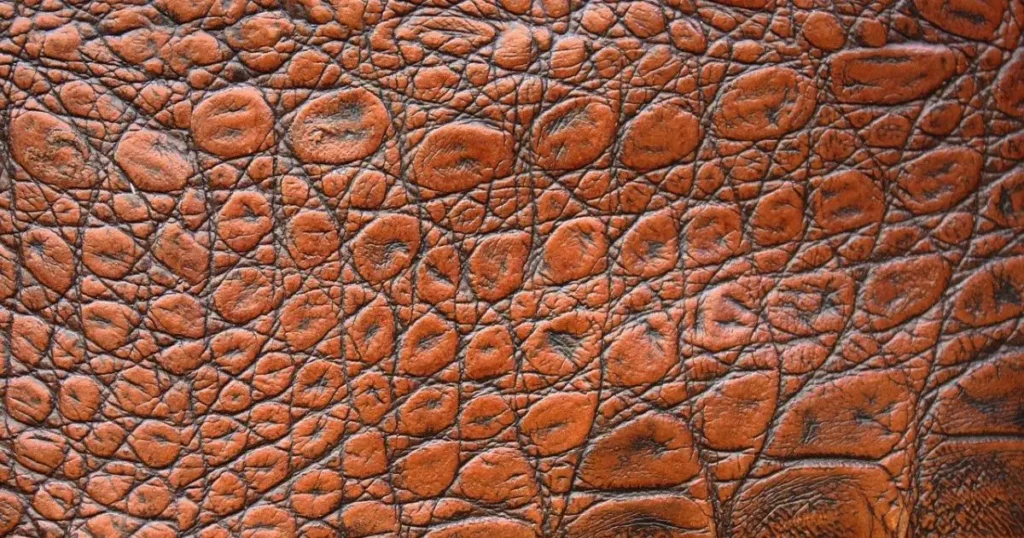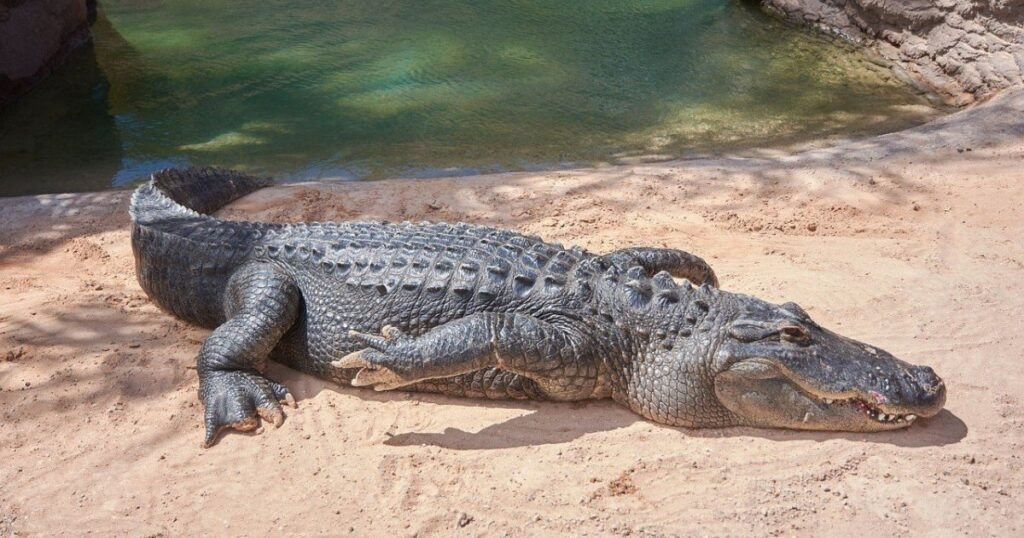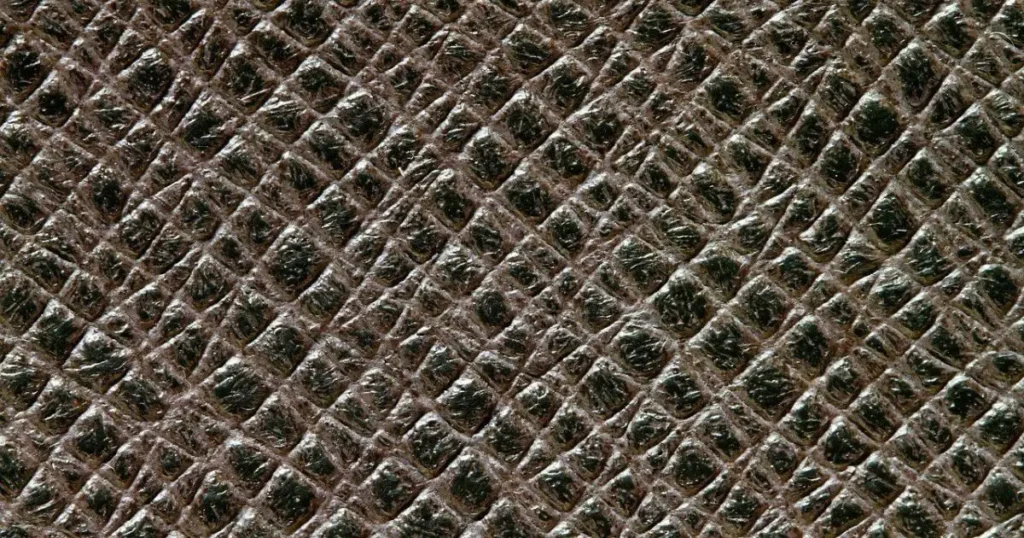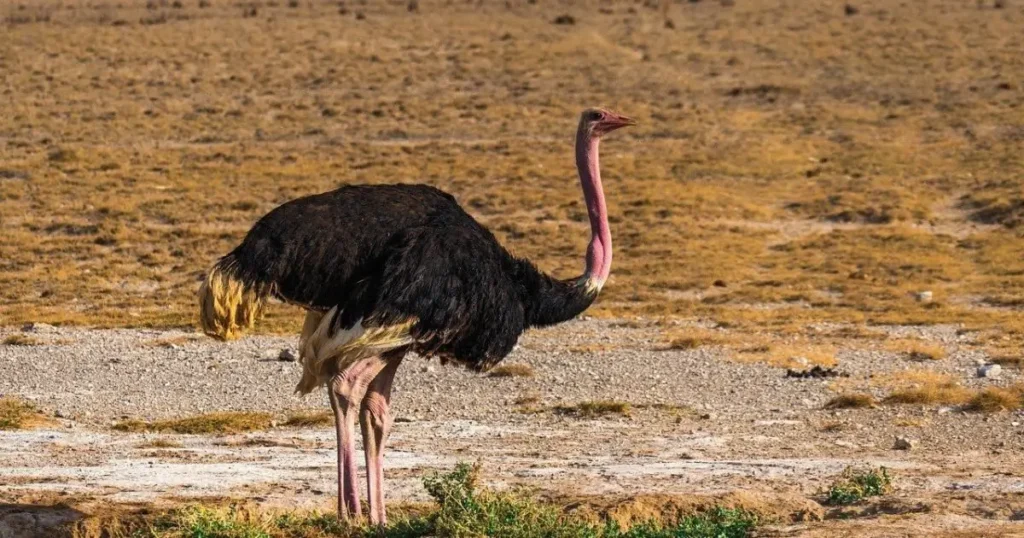Exotic leather refers to hides and skins from rare animals, not typical livestock. These materials come from species like alligators, snakes, ostriches, and stingrays.
Exotic leather stands out for its unique patterns and textures, making it highly sought after in fashion and design. Each type of exotic leather offers distinct visual and tactile qualities, contributing to its luxurious appeal. Despite its allure, exotic leather also raises important ethical and environmental considerations.
Understanding what exotic leather is involves exploring its sources, processing methods, and uses. This knowledge helps consumers make informed choices about luxury materials. Dive into the world of exotic leather to discover its beauty, complexity, and the responsibilities it entails.

What Are The Different Types Of Exotic Leathers?
Exotic leather comes from unique animals, providing distinct textures and patterns. Common types include alligator, ostrich, and snake leather. Each type offers a different look and feel, often used in high-end fashion.
Exotic leather comes from unique and rare animals. It is prized for its beauty and texture. Let’s explore the different types of exotic leathers.
Crocodile Leather
Crocodile leather is known for its unique pattern. It is durable and luxurious.

- Sought-after texture: Crocodile skin has a distinctive, irregular pattern.
- High durability: This leather can last for years with proper care.
- Versatility: Used in bags, shoes, and accessories.
Ostrich Leather
Ostrich leather is soft yet strong. It has a unique dotted pattern.
- Soft and flexible: Feels smooth and is easy to work with.
- Distinctive look: Recognized by its quill marks.
- High cost: One of the more expensive exotic leathers.
Snake Leather
Snake leather offers a sleek and exotic look. It is lightweight and fashionable.
- Lightweight: Easy to carry and wear.
- Eye-catching patterns: Unique scales create a striking appearance.
- Versatile use: Ideal for shoes, belts, and handbags.
Stingray Leather
Stingray leather is extremely tough. It has a pebbled texture and natural sheen.

- Tough and durable: Hard to scratch or damage.
- Unique texture: Feels like tiny beads.
- Exotic appearance: Often dyed in vibrant colors.
Shark Leather
Shark leather is prized for its rough texture. It is highly durable and water-resistant.
- Durable and strong: Known for its toughness.
- Water-resistant: Ideal for marine gear and accessories.
- Unique texture: Distinct rough feel unlike other leathers.
Alligator Leather
Alligator leather is luxurious and rare. It has a smoother texture than crocodile leather.
- Luxurious feel: Smoother and softer than crocodile.
- High demand: Considered a status symbol.
- Versatile: Used in high-end fashion items.
Each type of exotic leather has its own charm. This makes them popular in fashion and accessories.
How Are Exotic Leathers Processed And Treated?
Exotic leather comes from rare animals like snakes, alligators, and ostriches. Processing involves cleaning, tanning, and dyeing to enhance durability and appearance. Skilled artisans treat and finish the leather to create unique, high-quality products.
Exotic leather is prized for its unique textures and patterns. Processing these leathers involves several detailed steps to ensure quality and durability.
Sourcing Raw Materials
The first step is sourcing quality materials. Various animals provide exotic leathers.
- Reptiles: Include snakes, crocodiles, and lizards.
- Fish: Such as sharks and stingrays.
- Mammals: Like kangaroos and ostriches.
Skinning And Tanning
Skinning and tanning preserve the hides. This stage is crucial.
- Skinning: Removes the skin from the animal.
- Tanning: Uses chemicals to prevent decay and add strength.
- Drying: The hide is dried to remove moisture.
Dyeing And Finishing
The next phase involves dyeing and finishing the leather. This enhances appearance.
- Dyeing: Colors the leather using various dyes.
- Finishing: Adds a protective layer to the surface.
- Polishing: Smooths and shines the leather for appeal.
Quality Control
Quality control ensures the leather meets standards. This step is vital.
- Inspection: Checks for defects or inconsistencies.
- Testing: Assesses durability and colorfastness.
- Grading: Categorizes leather based on quality.
Cutting And Shaping
Cutting and shaping transform the leather into final products.
- Pattern Cutting: Cuts leather into specific shapes.
- Shaping: Molds the leather into forms.
- Sewing: Stitches pieces together for structure.
Final Treatment
The final treatment adds the finishing touches.
- Conditioning: Applies oils to maintain suppleness.
- Embossing: Adds textures or logos.
- Packaging: Prepares the leather for shipping.
The Cleaning And Care Of Exotic Leather
Exotic leather comes from unique animals like snakes, alligators, and ostriches. It needs special care to maintain its beauty. Regular cleaning and conditioning help keep the leather soft and shiny.
Exotic leather is known for its unique beauty. Caring for it properly ensures its longevity. This section will guide you through the cleaning and care of exotic leather.
Basic Cleaning Tips
Regular maintenance is key. Here are some basic cleaning tips to keep your exotic leather looking its best:
- Dust regularly: Remove surface dust with a soft cloth.
- Avoid water: Water can damage exotic leather. Use a dry cloth instead.
- Use a gentle cleaner: Select a cleaner made specifically for exotic leather.
- Test the cleaner: Always test on a small, hidden area first.
- Wipe gently: Don’t rub too hard. Gentle wipes are sufficient.
Conditioning Exotic Leather
Conditioning is essential for maintaining the leather’s suppleness. Regular conditioning prevents cracking and drying out. Use a high-quality conditioner designed for exotic leather. Apply the conditioner with a soft cloth, ensuring even coverage. Allow it to absorb fully before buffing.
Storing Exotic Leather
Proper storage extends the life of your exotic leather items. Here are some key points to remember:
- Store in a cool, dry place: Avoid direct sunlight and damp areas.
- Use breathable covers: Fabric covers allow air circulation, preventing mildew.
- Keep away from heat: Heat sources can dry out and damage the leather.
- Maintain shape: Stuff items like bags with tissue paper to retain shape.
Dealing With Stains
Accidents happen. When they do, quick action can save your leather:
- Blot immediately: Use a soft cloth to blot, not rub, the stain.
- Avoid harsh chemicals: Stick to mild cleaners suited for exotic leather.
- Consult professionals: For stubborn stains, seek professional cleaning services.
Protecting Against Wear
Preventing damage is easier than repairing it. Follow these tips to protect your exotic leather:
- Rotate usage: Avoid using the same item daily to reduce wear.
- Handle with clean hands: Oils and dirt can transfer from hands to leather.
- Use protective products: Consider applying a protective spray designed for exotic leather.
By following these guidelines, you can keep your exotic leather looking pristine for years. Regular care and attention make all the difference.
What Are The Best Exotic Leathers?
Exotic leather comes from rare animals, offering unique textures and patterns. Some of the best exotic leathers include alligator, ostrich, and python. These leathers are prized for their durability and distinctive appearance.
Exotic leather is sought after for its unique look and feel. It adds a touch of luxury to fashion and accessories. Let’s explore some of the best exotic leathers available.
Alligator Leather
Alligator leather is a top choice for high-end items. It is known for its durability and unique pattern.
- Distinctive pattern: The scales are small and uniform.
- Durability: It is tough and long-lasting.
- Soft texture: Despite its toughness, it feels soft to touch.
Ostrich Leather

Ostrich leather is easily recognizable and highly prized. It offers a unique look and feel.
- Quill bumps: These small bumps are unique to ostrich leather.
- Flexibility: It is very flexible and soft.
- Longevity: Known for its long-lasting quality.
Python Leather
Python leather stands out due to its distinctive scale pattern. It’s a favorite in the fashion world.
Python leather is also highly flexible and offers a unique texture. Each piece has a distinct pattern, making every item unique.
Stingray Leather
Stingray leather is one of the toughest exotic leathers. It has a unique texture and look.
- Durability: It is extremely tough and resistant to wear.
- Unique pattern: The leather has a distinct pebbled texture.
- Water-resistant: Stingray leather is naturally water-resistant.
Crocodile Leather
Crocodile leather is highly valued for its luxurious appearance. It is often used in high-end products.
Crocodile leather has a distinctive scale pattern and is durable. Its unique texture and natural sheen make it a popular choice.
Lizard Leather
Lizard leather is ideal for smaller accessories. It is known for its fine texture and detailed pattern.
- Fine texture: The scales are small and fine.
- Lightweight: It is light and easy to work with.
- Unique look: Each piece has a unique pattern.
Kangaroo Leather
Kangaroo leather is known for its strength and lightness. It’s often used in sporting goods.
Kangaroo leather is very strong yet light. It offers excellent flexibility and durability, making it perfect for active use.
By understanding these exotic leathers, you can choose the right material for your needs. Each type offers unique benefits and characteristics.
What Is Exotic Leathers Used For
Exotic leather is used for crafting luxury items such as handbags, shoes, wallets, and belts. It comes from unique animals like snakes, crocodiles, and ostriches.
Exotic leathers are a unique and luxurious choice for many products. They come from animals like alligators, snakes, and ostriches. These materials offer distinct textures and patterns, making them highly sought after in various industries.
Fashion Accessories
Exotic leathers make a statement in fashion. They are often used for:
- Handbags: Unique patterns and textures add luxury.
- Shoes: Durable and stylish, perfect for high-end footwear.
- Wallets: Compact and elegant, a touch of sophistication.
Clothing
Adding exotic leather to clothing pieces enhances their appeal. They are used in:
- Jackets: Adds a rich and bold look.
- Belts: Durable and stylish, a perfect accent.
- Gloves: Soft and luxurious, ideal for winter wear.
Interior Design
Exotic leathers are also popular in home decor. They are used in:
- Furniture: Adds a touch of elegance and uniqueness.
- Wall Panels: Creates an eye-catching and luxurious finish.
- Decorative Items: Small accents that elevate room aesthetics.
Automotive Industry
Luxury cars often feature exotic leather interiors. They are used for:
- Seats: Comfortable and high-end appearance.
- Steering Wheels: Adds a unique and luxurious touch.
- Dashboards: Enhances the overall interior design.
Jewelry
Jewelry designers incorporate exotic leathers into their pieces. This includes:
- Bracelets: Unique textures and patterns.
- Necklaces: Adds an element of luxury and style.
- Earrings: Lightweight and distinctive.
Technology Accessories

Exotic leathers also make tech gadgets look chic. They are used in:
- Phone Cases: Stylish and protective.
- Laptop Sleeves: Adds a touch of class.
- Tablet Covers: Luxurious and durable.
Art And Craft
Artists and crafters use exotic leathers to create unique pieces. They are used for:
- Sculptures: Adds texture and visual interest.
- Book Covers: Durable and attractive.
- Custom Projects: Endless possibilities for unique designs.
The Cons Of Exotic Leather
Exotic leather often involves unethical animal treatment and environmental harm. It is usually more expensive and less durable than regular leather.
Exotic leather is a luxury material. But it has its downsides. Despite its appeal, using exotic leather comes with several issues worth noting.
Ethical Concerns
Many people question the ethics of exotic leather. Here are some of the main issues:
- Animal Welfare: Harvesting exotic leather often involves harming animals.
- Endangered Species: Some animals used are endangered, causing conservation concerns.
- Inhumane Practices: Some production methods are cruel and inhumane.
Environmental Impact
The production of exotic leather has significant environmental effects. It isn’t just about the animals. The process itself can be damaging.
- Pollution: Tanning and dyeing the leather releases harmful chemicals.
- Habitat Destruction: Collecting exotic skins can lead to habitat loss.
- Resource Intensive: Exotic leather production uses a lot of water and energy.
High Cost
Exotic leather is expensive. This cost doesn’t just affect the buyer.
- Production Costs: Harvesting and processing exotic skins is costly.
- Market Price: Exotic leather products are priced much higher.
- Maintenance: Keeping exotic leather in good condition requires special care.
Limited Availability
Exotic leather isn’t always easy to find. Its rarity adds to its allure but also brings challenges.
- Scarcity: Exotic skins are less available than traditional leather.
- Import Restrictions: Some countries have strict rules on importing exotic leather.
- Demand vs. Supply: High demand and low supply increase market prices.
Conclusion
Exotic leather offers unique textures and patterns. It’s sourced from various animals like snakes and alligators. Processing and treating exotic leather requires expertise. Proper care extends its lifespan and maintains its beauty. Popular uses include luxury bags, shoes, and accessories.
Despite its appeal, exotic leather has cons, including ethical concerns and high costs. Understanding these factors helps you make informed choices. Exotic leather remains a fascinating material, blending luxury with nature’s beauty.

Leave a Reply